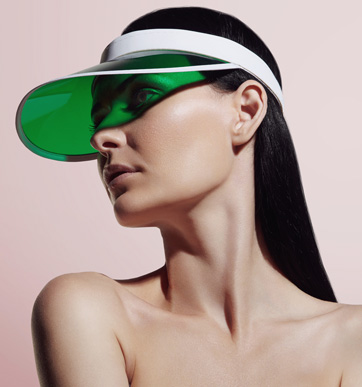 Skin Cancer
Skin Cancer
Your Skin Cancer IQ
Who doesn’t love our sun, surf and sand? Southern California wouldn’t be what it is without its perfect climate. But, too much sun exposure can increase our risk for skin cancer. Skin cancer is now the most common type of cancer, more common than all other cancers combined. At least 1 in 5 people will get a skin cancer sometime during his or her life, and the risk is even higher for those in Los Angeles. Although we’ve all heard about sun protection and skin cancer prevention, there are still many myths that must be busted. Let’s brush up on your skin health IQ!
Myth 1.
Skin cancer only affects older adults.
False! Malignant melanoma, the most dangerous form of skin cancer, is now the most common type of cancer in young adults ages 25-29 and the second most common cancer in those who are 15-29 years old. We’re seeing rates increase faster in young woman, which likely relates to increased sun exposure and indoor tanning use. Checking your own skin monthly is a proactive way to stay alert to changes in the number, size, shape or color of spots on your skin. Getting your skin examined regularly by a board certified dermatologist is also important.
Myth 2.
You don’t need to wear sunscreen on a foggy day.
False! It is a common myth that you can’t get sunburned on one of our coastal foggy days, but this is incorrect. Ultraviolet rays come right through clouds and fog causing damage to our skin cells’ DNA. Over time, this damage accumulates leading to prematurely aged skin, pre-skin cancers and eventually skin cancers. It’s important to stay protected when outdoors every day.
Myth 3.
Windows protect us from UV rays.
False! There are different types of ultraviolet rays, and all can damage skin. While glass blocks most UVB rays, it doesn’t protect us from UVA rays, which are associated with all forms of skin cancer. Remember to keep your skin protected if you sit by a sunny window at work and when driving!
Myth 4.
A “base tan” protects your skin from sunburn and skin cancer.
False! There is no such thing as a safe or protective tan. A tan is a sign that one of your body’s defense mechanisms is at work. When your skin senses damaging UV rays, it creates an umbrella of color to protect itself. This umbrella is what we see as a tan, and a “base tan” only offers an SPF (sun protective factor) of about 3, which is equivalent to protection from a wet white T-shirt. Basically, not much! Base tans give people a sense of false security. Often, they end up using less sunscreen and actually burning more.
Myth 5.
The best source of Vitamin D is the sun.
False! Vitamin D is the vital “sunshine” vitamin made by our bodies when the sun’s UVB rays initiate conversion in the skin. But, sun exposure isn’t the only way to get Vitamin D. There are many other excellent sources of Vitamin D, which don’t have an associated skin cancer risk. Dark, leafy green vegetables like spinach and kale, fortified milk, and the vitamin itself are excellent ways to increase your vitamin D without increasing your risk of skin cancer.
Myth 6.
Sunscreen, hats, and long-sleeved clothing are the only ways to protect yourself from skin cancer.
False! While sun protection is the foundation of skin cancer prevention, there are many more things you can do to reduce your risk. Eating an anti-oxidant rich diet of fresh fruits and vegetables can promote skin health. Using topical creams containing DNA repair enzymes that reverse sun damage and taking a specific form of vitamin B3 can both reduce your risk of skin cancer. Finally, certain laser procedures that remove damaged skin can be protective as well.
Myth 7.
Tanning salons are safer than tanning outdoors.
False! Indoor tanning bed users are often exposed to new high-pressure bulbs that are much stronger than rays from the sun. Indoor tanners may receive as much as 12 times the annual UV dose they receive from sun exposure. Just because tanning beds look high tech and have specific timers in place doesn’t mean these devices are safe at all. Indoor tanners have a higher risk of all forms of skin cancer, including malignant melanoma, the most dangerous form of skin cancer.
Myth 8.
I have darker skin, so I can’t burn.
False! Although it’s true that darker skin has a higher concentration of pigment, which helps protect our skin from the sun, skin cancer is color blind. In fact, the risk of melanoma increases with UVA exposure, the type of UV ray that doesn’t cause the skin to obviously turn “red.” No matter your skin tone, it’s still important to protect your skin!
Myth 9.
I’ve already applied sunscreen, so I no longer need to worry.
False! A single application of sunscreen isn’t a fail-safe solution for spending time in the sun. Sunscreens wash, rub, and sweat off, and must be applied at least every 2 hours to remain effective. In addition, many people don’t use an adequate amount of sunscreen on their skin. It takes an entire ounce of lotion to appropriately cover your arms, legs, and face, and most people use a much thinner coat. Like any meditation, if you only use ½ the dose, you only get ½ the protection!

